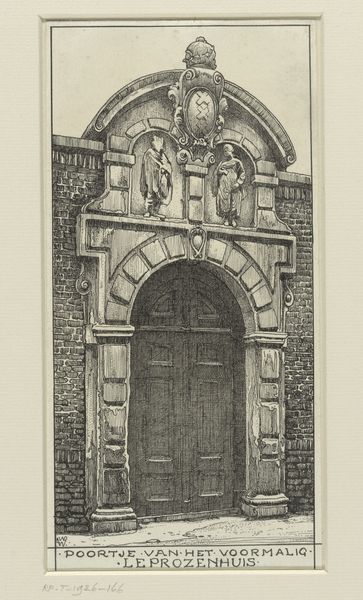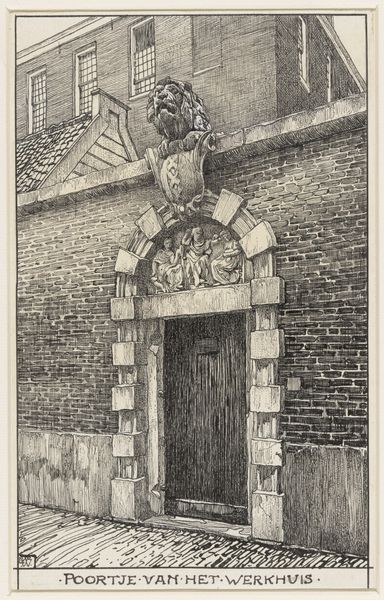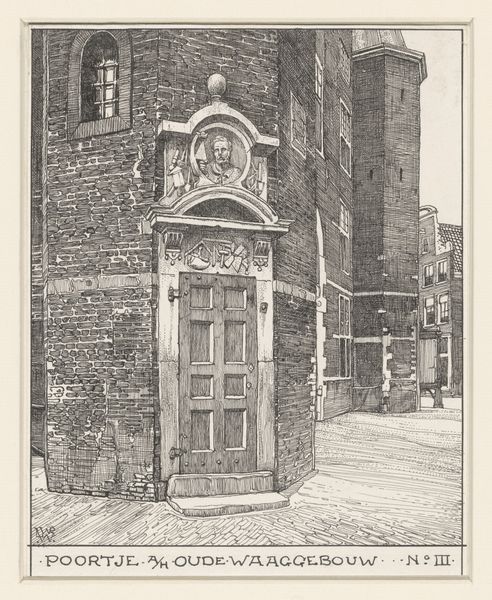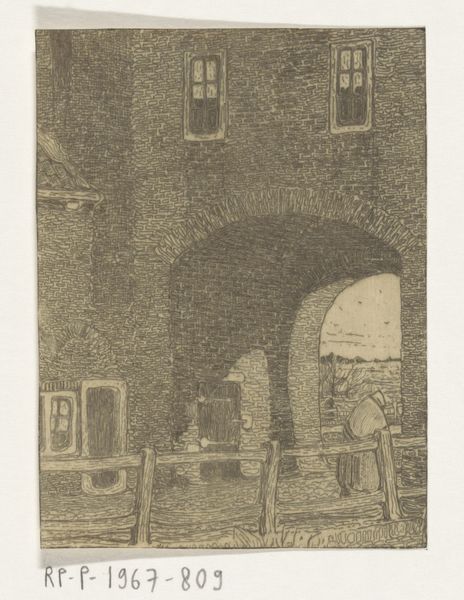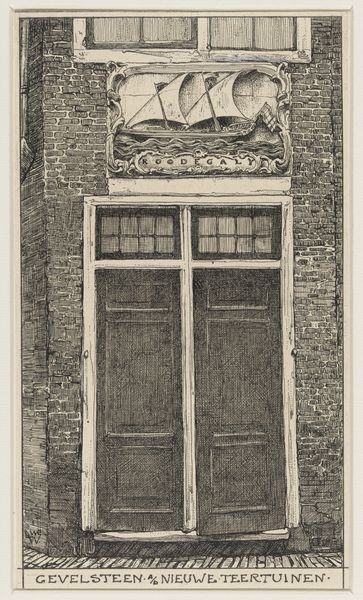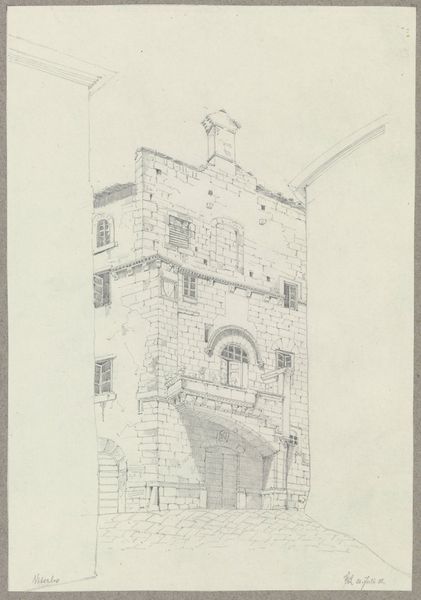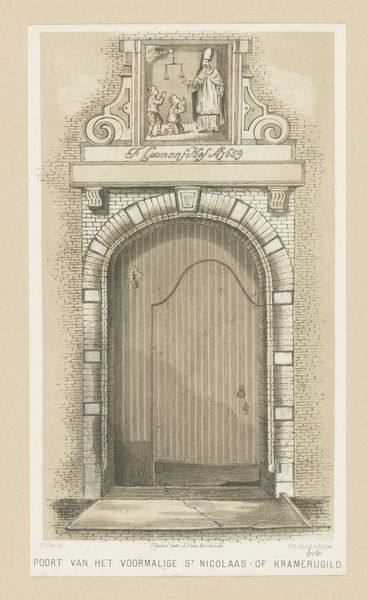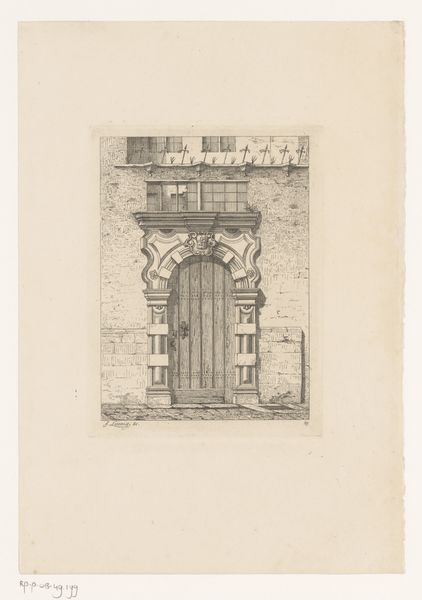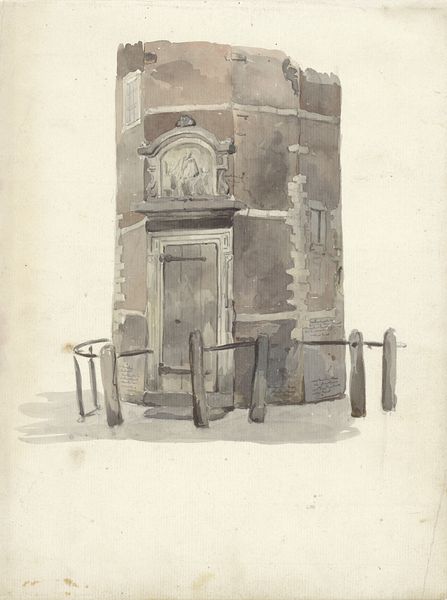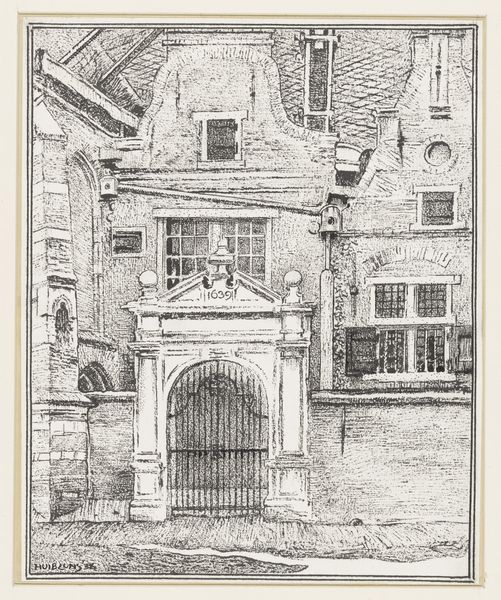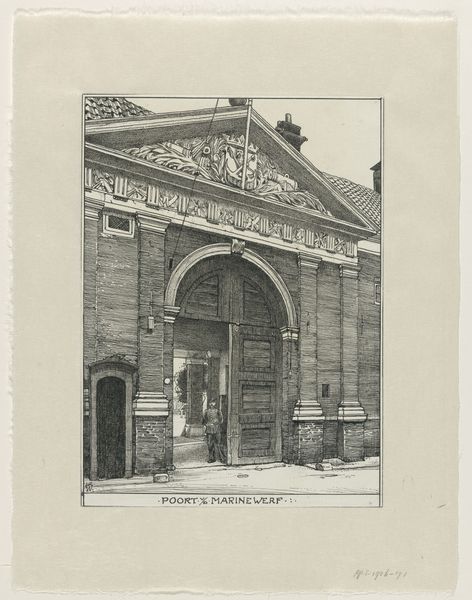
drawing, paper, ink
#
drawing
#
paper
#
ink
#
line
#
cityscape
#
realism
Dimensions: height 202 mm, width 155 mm
Copyright: Rijks Museum: Open Domain
Curator: Looking at "Poortje aan het oude Waaggebouw te Amsterdam, nr. IV", a work made with ink on paper, likely somewhere between 1870 and 1926, immediately gives a very detailed but also very still sense of daily life in Amsterdam at the time. Editor: It’s undeniably somber, isn’t it? The close focus, the monochromatic palette... There’s a distinct air of weight, almost oppressive in the detail rendered in shadow, speaking to structures – literal and figurative – bearing down on people. Curator: But also of permanence. Note the rendering of the old weighing house. It stands solid and secure. These symbols represented order and civic power, key elements of a prosperous merchant society that still echo through time, informing the values of Dutch society to this day. Editor: I'd argue that sense of order masks social complexities. Who benefits from this solid structure? What roles do the people visible in the distance play in upholding it? Whose labor built it? I mean, it speaks of power and wealth for some, but perhaps less for others... Curator: A keen eye! The symbol above the doorway almost certainly marks a civic guild. The scales are emblematic of not just trade, but a shared compact across trades – cooperation that benefited more than the individual. Of course, that cooperation came with rules and consequences. Editor: Precisely. The symbolism here hints at hierarchies – access, exclusion. It isn't a simple depiction of urban life, but a coded representation of the existing social contract that continues to generate power dynamics today. Curator: Yet that doesn't negate the sheer beauty of Wenckebach's draftsmanship. Note how the textures are almost palpable! Each brick is an individual moment, a mark of humanity – but brought together, they produce one clear effect. Editor: A humanity filtered through privilege and power structures. Even in this tranquil scene, those reverberations are present, a reminder that how we remember shapes how we interpret the future. Curator: Yes, it reminds us of how the cityscapes of the past also echo within modern contexts, allowing us to ponder their ever-lasting influence. Editor: Indeed. As if each drawing reveals layers of meanings, prompting us to examine how history continuously affects us today.
Comments
No comments
Be the first to comment and join the conversation on the ultimate creative platform.
